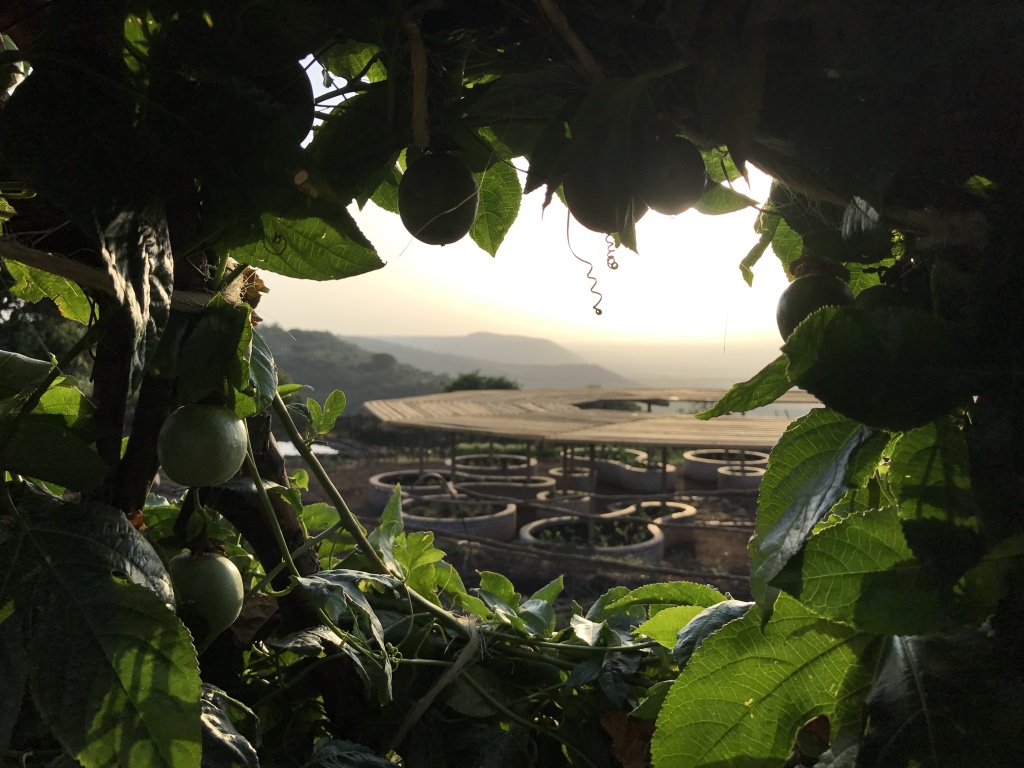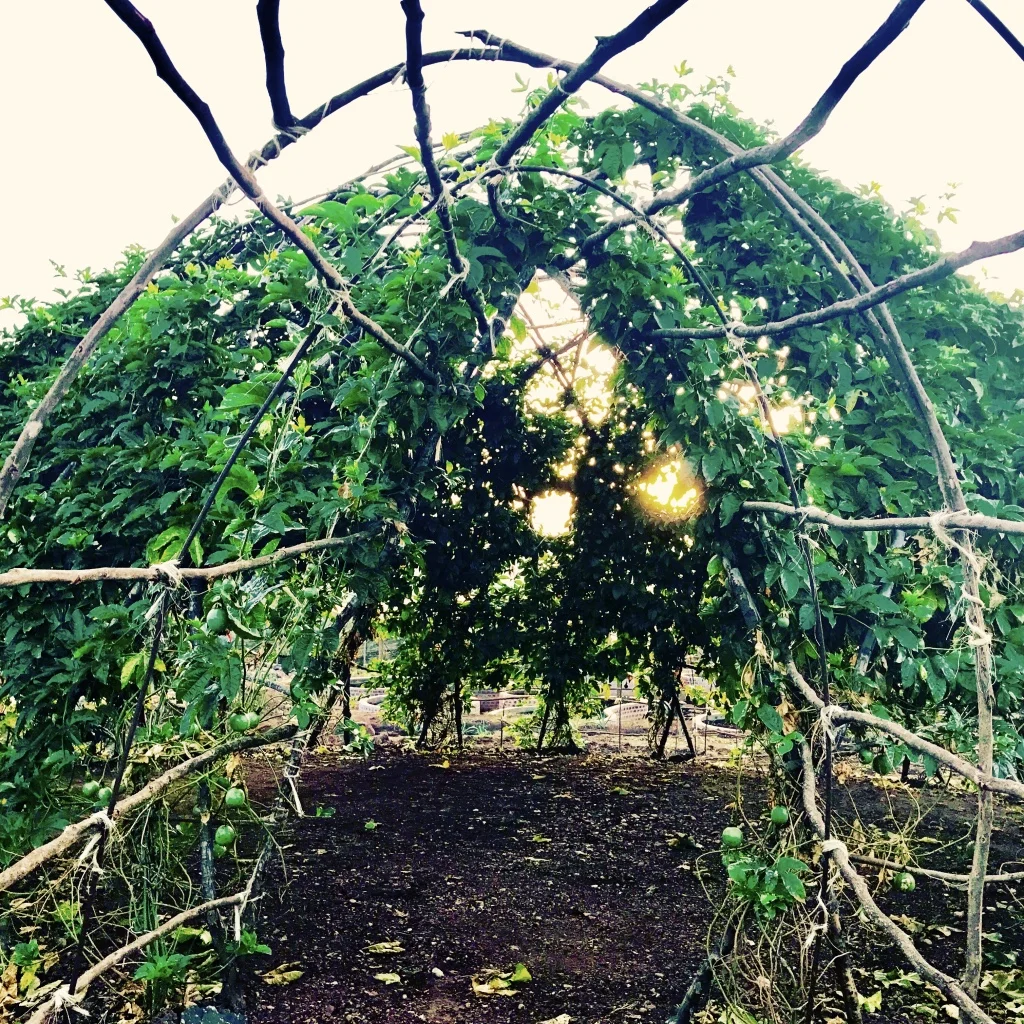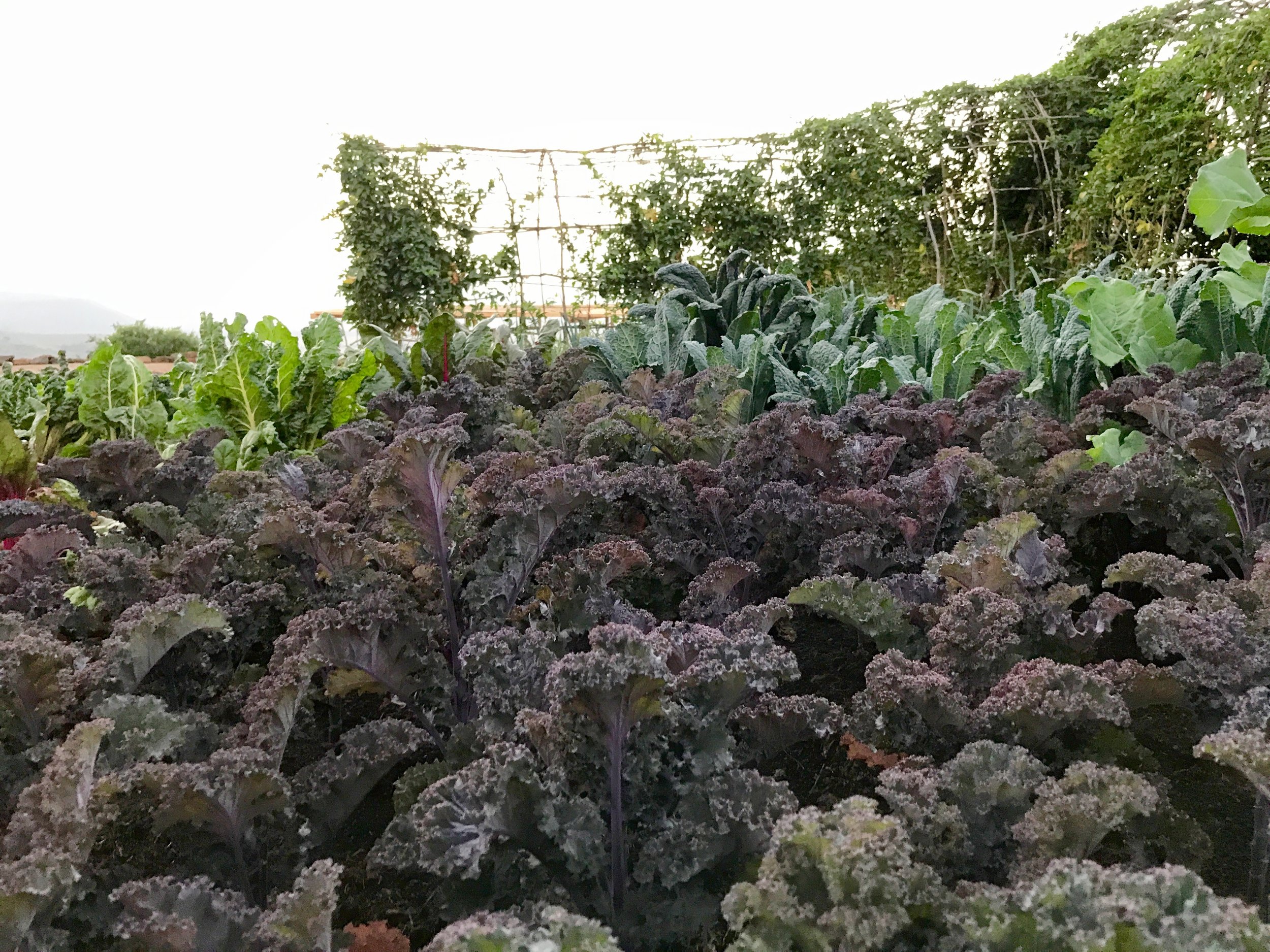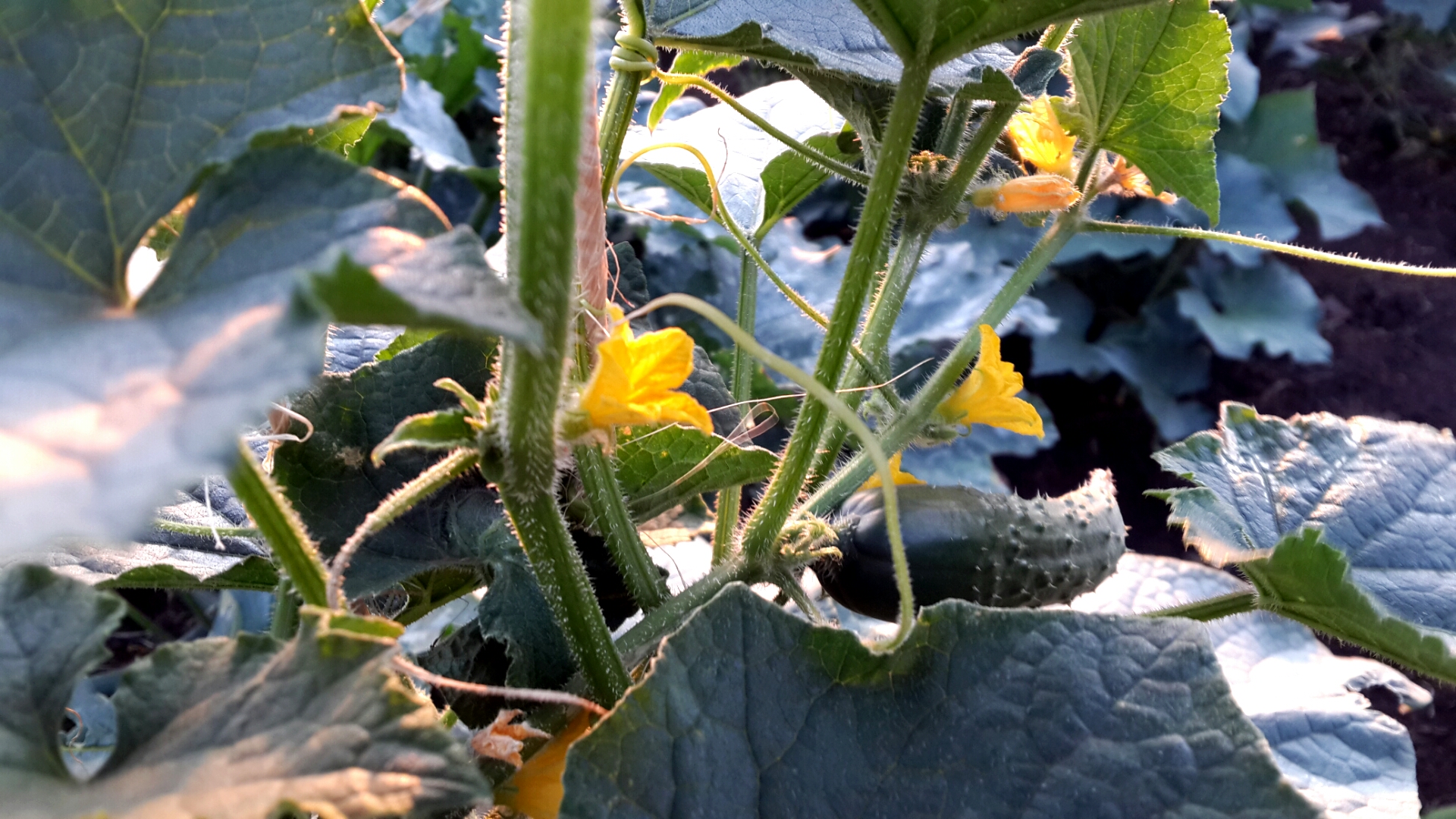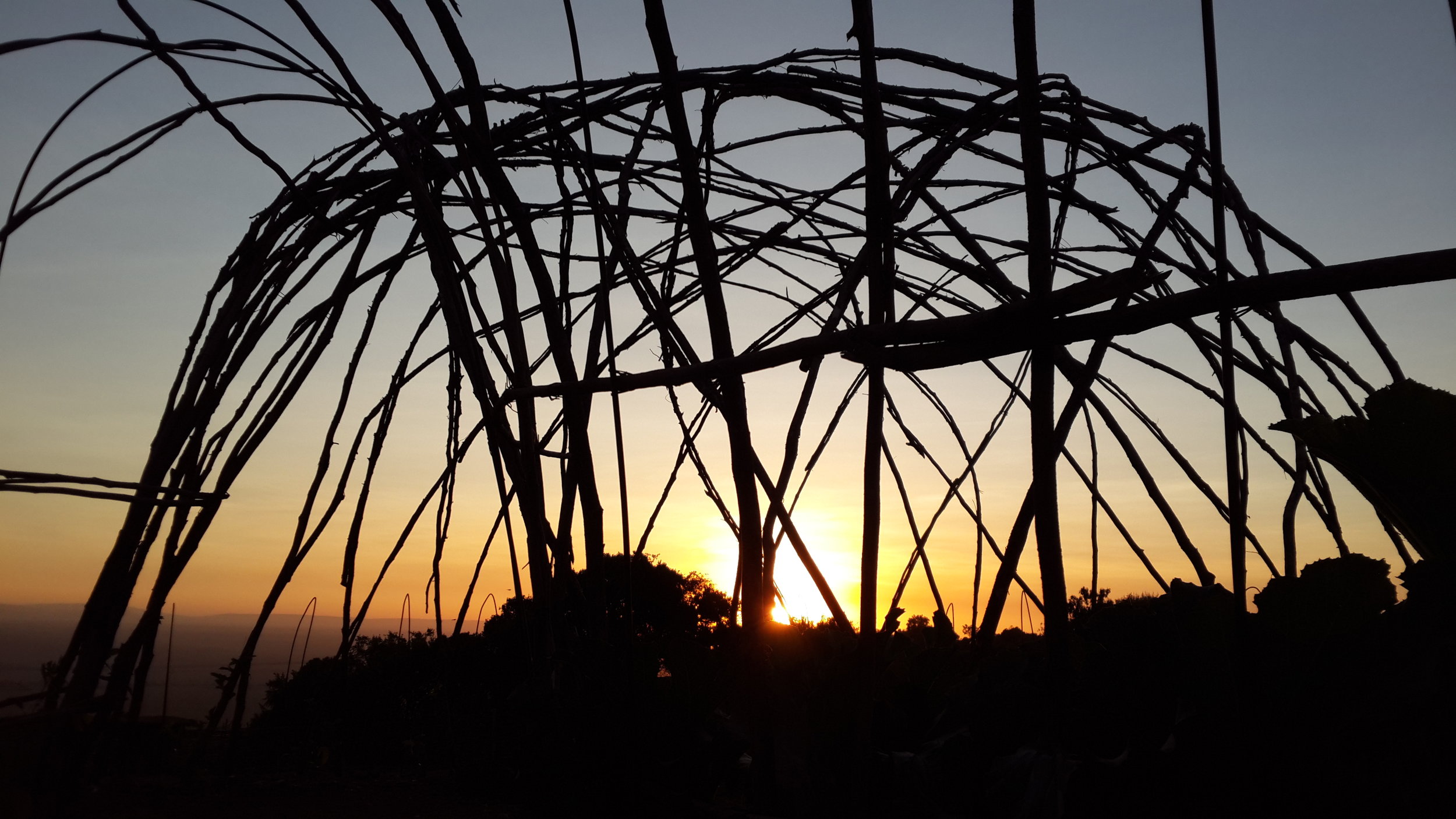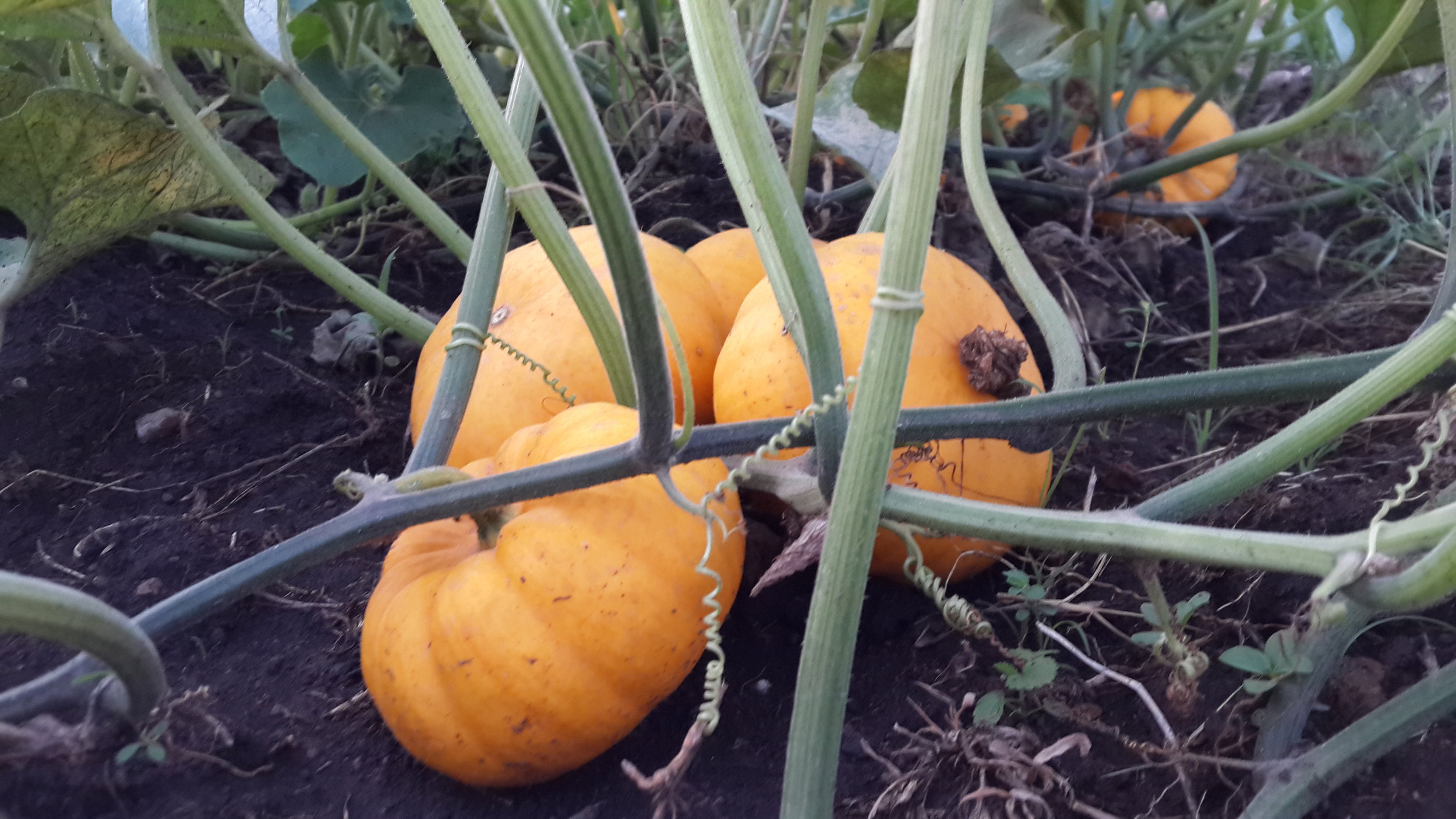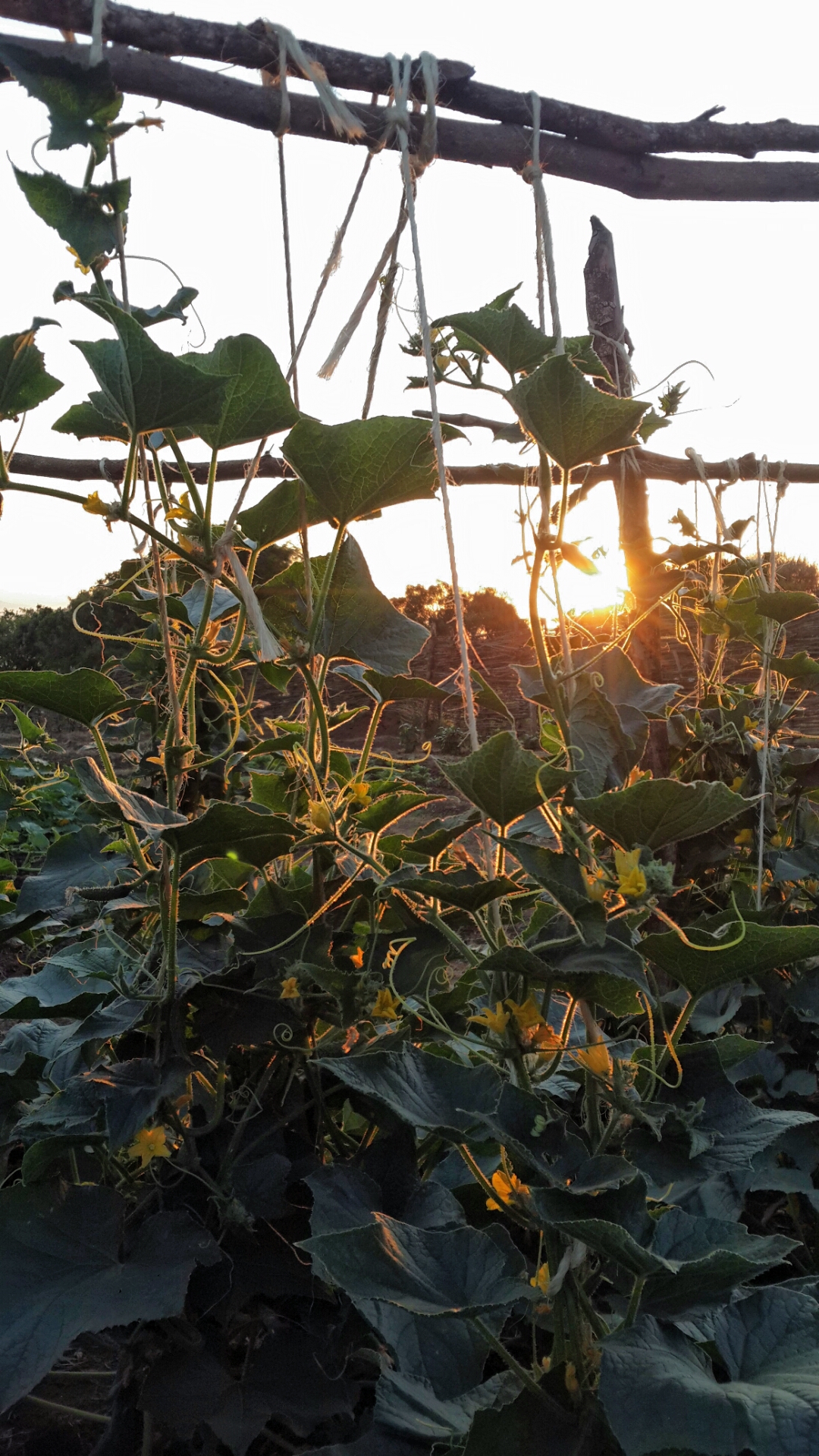Enchanting Pumpkin Tunnels:
Constructed using 5m sturdy and flexible offshoots, sourced from a local forest. The offshoots were bent accordingly. The base of the offshoots were coated in tar and then placed in metal cylinders which were buried into the soil, solidifying the structure and to combat rotting. The tunnels are 0.8m in width and 2.3m in height. The raised circular arbour 3m in diameter and 2.3m in height. The tunnels and arbour supports vining members of the Curcurbitaceae family ( all plants related to the pumpkins such as squashes, melons and baby marrows). These plants enclose the arbour and tunnels, and seasonally rotated. Companion plants such as tarragon, mint and marjoram are planted around the tunnels and arbour. Avocado, papaya and mango trees have been planted in bundles (mini forests) along the perimeter of the Curcurbitaceae tunnelled zone.
The objective for this project was to create intrigue and mystery. Entering the Shamba, visitors walk through a pumpkin tunnel, obscuring views of the Mara and the rest of the Shamba. The entry tunnel leads into a raised circular calabash arbour, serving as a visitor welcoming space. Small openings or windows within the arbour walls offer visitors a sneak glimpse of the Shamba and the Mara beyond. Within the arbour, visitors can learn more about spaces in the Shamba they would like to visit by looking at a detailed map framed and fixed to a stand. At this point visitors are faced with a decision to either follow a short tunnel towards the next focus area of the shamba or enter through a snake-shaped tunnelled path, allowing access to hard to reach sacred spaces.The snake-shaped tunnelled path finally leads the visitor out into the open on a path where they can finally take in the Shamba in its entirety, while making their way across a bridge overlooking a larger dam, toward the citrus labyrinth.



